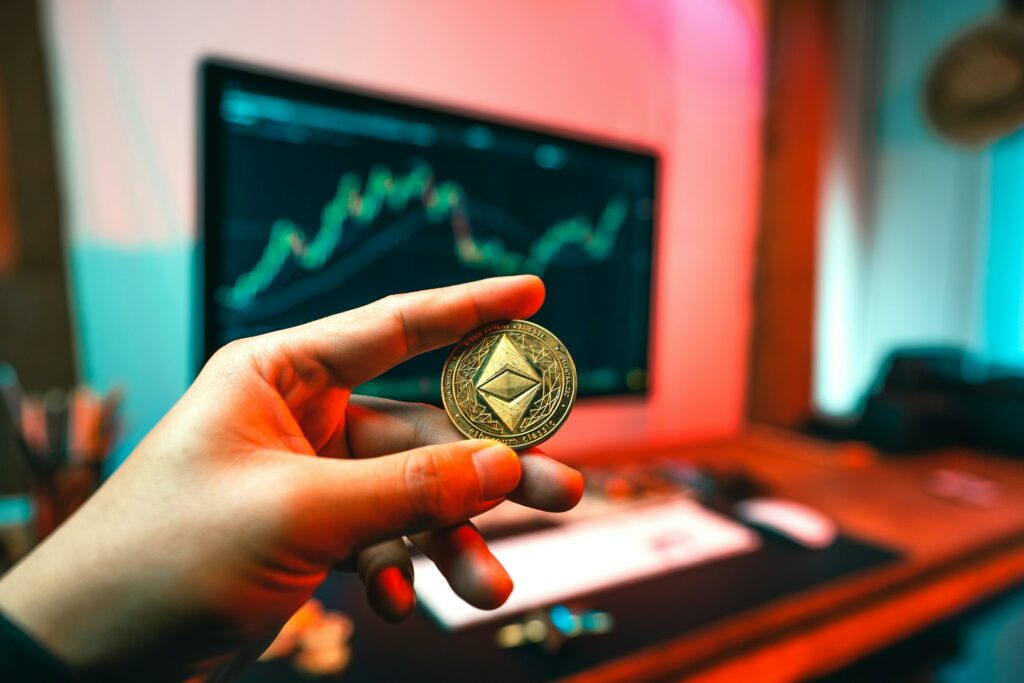Cryptocurrencies and blockchain platforms are relatively new technologies. They are constantly being developed and improved, which means there is news coming out all the time about the latest updates. One such headline is Ethereum Raising Its Gas Limit, a decision that could have significant implications for the network’s scalability and transaction throughput.
Recently, it was reported that Ethereum is looking to raise its gas limit. In the article below, we discuss exactly what this means, how it might impact the Ethereum Price and the knock-on effect it could have on the wider cryptocurrency industry. Let’s find out more.
What is Ethereum Gas?

When people use the term gas in discussions about the Ethereum blockchain and cryptocurrency, they are not talking about a fuel that is used to power the assets. In this context, gas is used to describe the fee the Ethereum blockchain charges for use.
To help you understand Ethereum gas, think of it as a toll fee. If you want to cross the bridge, or in this case use the Ethereum blockchain, you must first pay the fee, or in this case the gas charge.
However, unlike at a toll booth, you cannot pay Ethereum gas fees with a few coins or your credit card. Instead, you must use Ethereum’s native cryptocurrency, ETH. These gas fees are charged to offset the energy costs required to process transactions on the blockchain network.
Gas Fees: How Do They Work?
With one ETH token currently valued at $2,557.55, newcomers to the Ethereum ecosystem might assume that gas fees are astronomical. Indeed, if Ethereum charged even one token per gas fee, they wouldn’t have many users on the platform.
Instead, gas fees are priced using a denomination called ‘gwei’, which represents one billionth of an Ethereum token. This ensures that no users will be priced out of using the network. Currently, gas fees average at approximately 35 gwei, which represents around $1.89.
Gas fees are charged if you want to process a transaction through the Ethereum blockchain, and also if you want to use tools and apps built and hosted on the platform, such as smart contracts. As an example, let’s take a look at how gas fees would work if you were processing a transaction.
After initiating a transaction, you will be provided with an estimate of the gas fee. Before you are permitted to proceed, you must first confirm that you are willing to pay the quoted sum.
The transaction will then be processed through the blockchain and validated through the proof of stake consensus mechanism. Once complete, the balance in your crypto wallet will be updated, with the gas fee withdrawn from your funds.

Raising the Gas Limit
Currently, there is a limit in place for the amount of gas used in a single block on the Ethereum blockchain. When Ethereum launched, this limit was 3 million but has risen over the years to today’s total of 30 million. However, the limit has not been changed in the last three years.
This limit is in place to ensure blocks do not become bloated with too many transactions. However, in a recent discussion on Reddit, Ethereum co-founder Vitalik Buterin proposed raising the gas limit by some 33%, which would bring it up to around 40 million.
This is certainly a significant spike, so why would Buterin make such a suggestion? According to the tech mogul, raising the gas limit would boost the capacity of the blockchain network by allowing for an increased number of transactions.
It could even lead to lower gas fees for users. If the blockchain network is congested, gas fees shoot up as a result. By raising the limit and allowing for more transactions per block, network congestion will be reduced, which will prevent spikes in gas prices.
However, there has been some pushback to the idea. Raising the gas limit will see the blockchain network grow, which could lead to data storage issues. This could lead to logistical issues and may make it more difficult to efficiently manage information.
Additionally, other developers have raised fears that increasing block transaction sizes could have the opposite desired effect, slowing down the network and impacting synchronicity.
What Does This Mean for the Future of the Industry?
The fact that Ethereum is even considering raising the gas limit is interesting. It suggests they see potential for the network to grow even more, and that they want to upgrade the system to ensure it can handle ever-increasing traffic levels.
Crypto is going from strength to strength. These digital currencies and blockchain platforms are being adopted by an ever more varied range of businesses, organisations and industries. Mainstream integration has long been the ultimate goal of crypto, as it wants to eventually replace traditional payment systems.
By moving ahead with the gas limit raise, Ethereum will be making a clear statement about its future ambitions. This will likely have a positive knock-on effect on the Ethereum price as investors are drawn in by the bold, forward-thinking decision.

Conclusion
Ethereum’s proposed gas limit increase is generating a lot of debate. The general consensus is that it will ultimately prove to be a positive move that should offer benefits for the asset and its users. Keep your eyes on the news for more updates about this story.




Comments are closed.